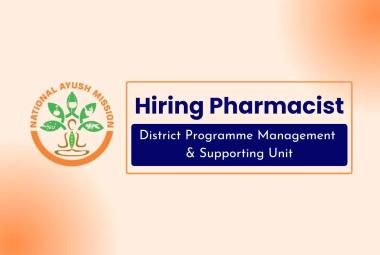Stevia as a herb has a long history to present. It is one such untapped nature’s wonder which has the potential to alter the sugar dynamics of the world.
Stevia is a genus of about 240 species of herbs and shrubs in the sunflower family (Asteraceae), native to subtropical and tropical South America and Central America. The species Stevia rebaudiana, commonly known as sweetleaf, sweet leaf, sugarleaf, or simply Stevia, is widely grown for its sweet leaves. As a sweetener and sugar substitute, stevia's taste has a slower onset and longer duration than that of sugar.
[adsense:336x280:8701650588]
Stevia vis-à-vis Sugar
With its extracts having up to 300 times the sweetness of sugar, stevia has garnered attention with the rise in demand for low-carbohydrate, low-sugar food alternatives.
Earliest Use
For centuries, the Guaraní tribes of Paraguay and Brazil used stevia, which they called ka'a he'ê ("sweet herb"), as a sweetener in yerba mate and medicinal teas for treating heartburn and other ailments.
CONGRATULATIONS
Four years after the scientific panel for food additives at the country's apex food regulator first recommended its usage, stevia, a natural sweetener, has finally received a go-ahead from the latter.
In a notification dated November 13, the Food Safety & Standards Authorityof India has permitted its use in a range of products. This includes carbonated water, dairy-based desserts and flavoured drinks, yoghurts, ready-to-eat cereals, fruit nectars and jams, among others.
The move, say experts, should pave the way for key users of sugar, including ice-cream, beverage and confectionary makers, to consider stevia as an alternative in their products. The natural sweetener is found in a plant called Stevia Rebaudiana. The chemical compound responsible for the sweetness is called steviol glycoside.
FSSAI has recommended up to 200 mg a kg of steviol glycoside in carbonated water, soft drink concentrates, yoghurts, fruit nectars, dairy-based flavoured drinks and non-carbonated water-based beverages. Ice lollies or edible ice may have up to 270 mg a kg of steviol glycoside. Dairy-based desserts and ready-to-eat cereals may have up to 330 and 350 mg a kg, respectively, of the compound. Jams, jellies and marmalades may have up to 360 mg a kg.
Chewing gum may have up to 3,500 mg a kg of steviol glycoside, and table-top sweeteners may have up to seven mg per 100 mg of the ingredient, the notification says.
In the past, companies such as Coca-Cola, Cargill and PureCircle (a stevia supplier), among others, had applied for the use of stevia in their products. Executives at Cargill India were not immediately available for comment. Officials at Coca-Cola said the development would allow them to consider how it could be used. Globally, Coca-Cola uses stevia in products such as Coca-Cola Life, billed as a health-conscious spinoff of its flagship cola. Rival PepsiCo has Pepsi True in its portfolio, which has stevia in it.
Cargill markets a popular table-top sweetener in the US called Truvia. This product uses two additives, stevia and erythritol, in combination.
Stevia extracts, say food safety experts, are up to 300 times sweeter than sugar. "People prefer the taste of sugar. If stevia can be used in combination with another additive, it will help," said the chief executive of a food company, who declined to be named.
[adsense:468x15:2204050025]
The November 13 notification from FSSAI does not specify this.
Diet Coke and Diet Pepsi in India use Aspartame and Acesulfame K, which are synthesied, high-intense sweeteners. So does Coke Zero.
If stevia is allowed, say sources, to be used in combination with low-intense sweeteners, it could go a long way in helping manufacturers replace high-intense, synthesied sweeteners, which are said to be also triggers for cancer.
Apart from Aspartame and Acesulfame K, the other high-intense sweeteners permitted in India include splenda or sucralose and saccharine.
Stevia - Preventive Control for Diabetes:
According to WHO, about 300 million people will suffer from diabetes by 2025. Studies reveal that about 2 people in the world are affected with diabetes every 10 seconds with India leading the way as the diabetic capital of the world.
The ailment of diabetes is caused when body does not produce or properly utilize the insulin produced. Consequently causing gangrene, amputation, adult blindness and end-stage renal disease (ESRD), diabetes is responsible for affecting the lives of millions of people around the world. Diabetes mellitus is categorized by regularly high levels of blood glucose (sugar) in the human body. The body has to be able to sustain the blood glucose levels in a narrow range, which is done by the elements of insulin and glucagon. The continually high levels of sugar in the body can cause kidney failure, cardiovascular problems and neuropathy.
The ever increasing endemic of diabetes can be controlled by the incredible Stevia plant. Research conducted by Dutch and Japanese scientists in 2003 have revealed that continuous intake of Stevia, induces the beta cells of pancreas to produce more insulin. This in turn reduces the dependence on oral as well as injectable insulin and controls diabetes.
CONCLUSION
Now FSSAI permitted the use of steviol glycoside in various products like dairy products, desserts carbonated water, flavored drinks, yoghurts, fruit nectars and jams etc. According to Dutch and Japanese scientists, where the use of steviol glycosides increased the risk of diabetes reduced, so now in India use of steviol glycoside morethan other sweeteners. So in future diabetes in Indian population ratio will decreased. steviol glycoside is non toxic, zero calories sweeteners, so when it is use in dairy desserts diabetic patients can eat. So stevia might be a no calories earth friendly sweeteners for you.
REFERENCES
1. https://en. wikipedia.org/wiki/Stevia
2. http://www. sosweet.in/History-14-3.html
 ABOUT AUTHOR
ABOUT AUTHOR
DHARMENDRA KUMAR
Assistant Professor,
Spectrum Institute of Pharmaceutical Science & Research
Gr. Noida, UP, India.
rvnimiet@gmail.com









